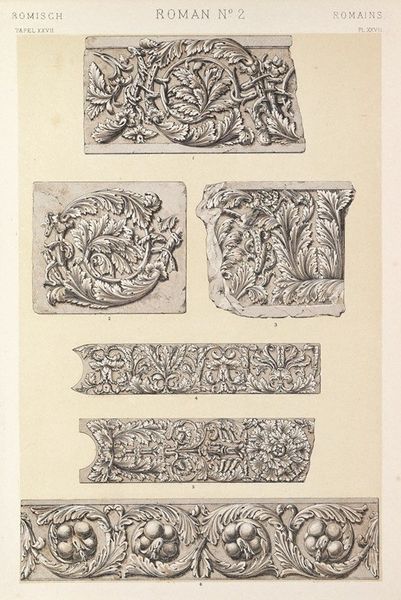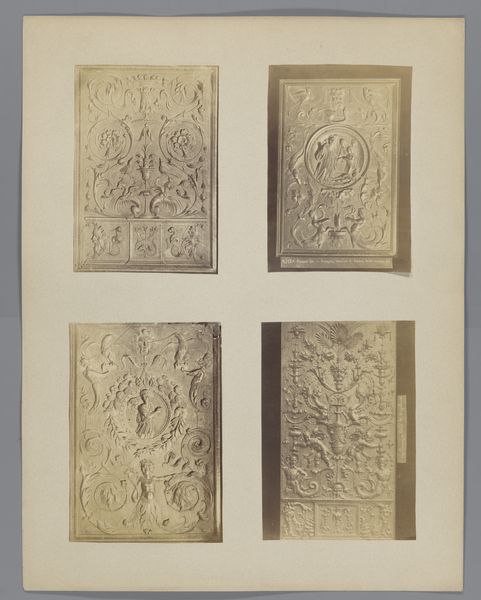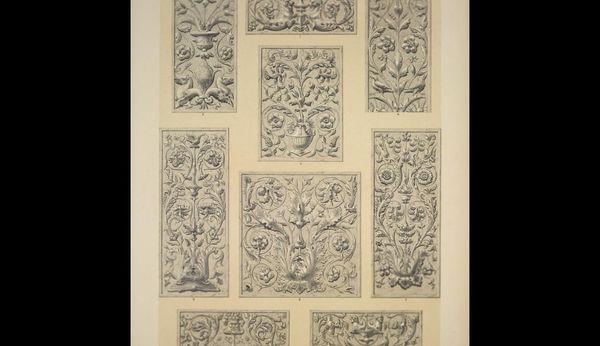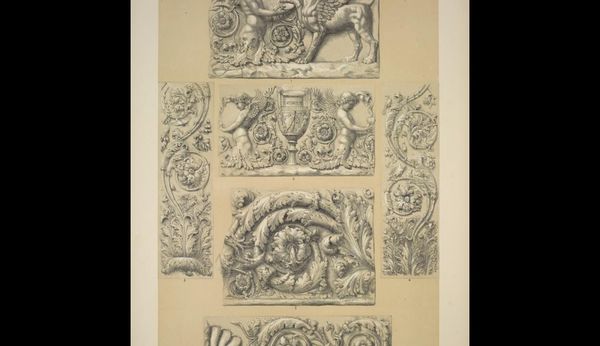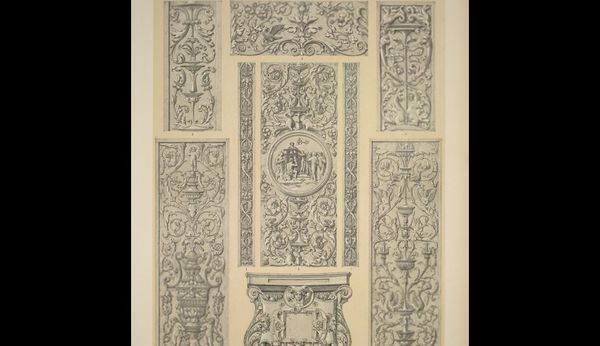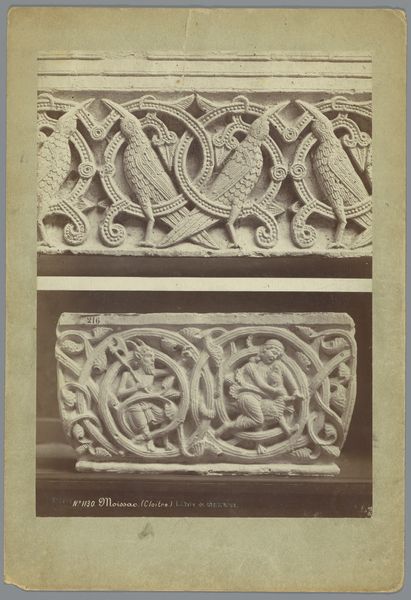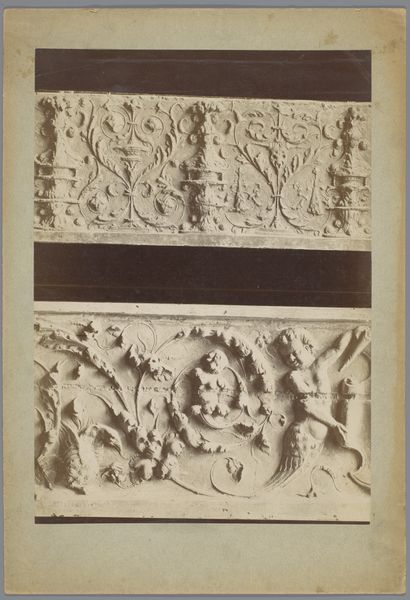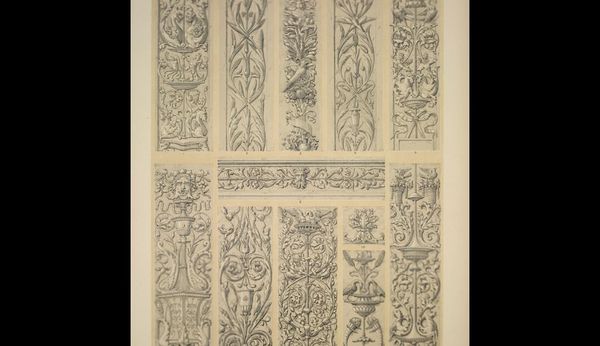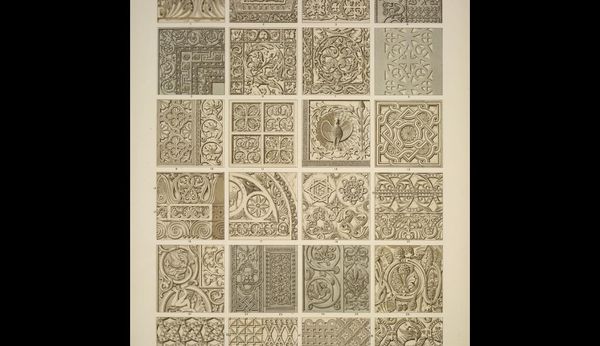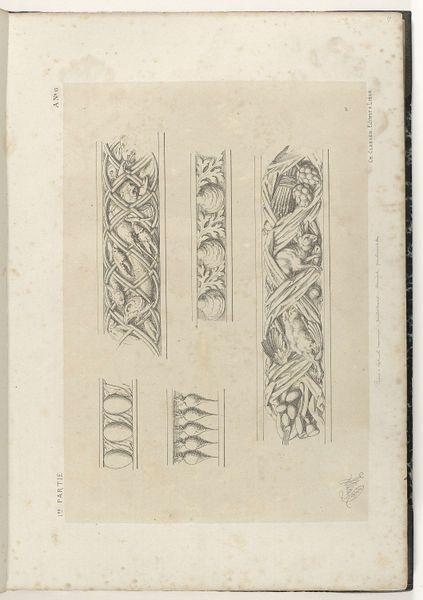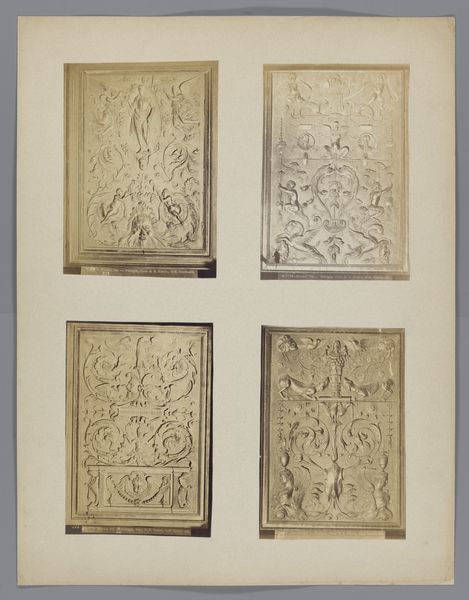
#
natural stone pattern
#
rippled sketch texture
#
cross hatching
#
pattern
#
old engraving style
#
woodcut effect
#
crosshatching
#
text
#
dark black outline
#
linocut print
#
line
#
pen work
#
intricate and detailed
Copyright: Public domain
Curator: Oh, how fascinating. This is Owen Jones' "Roman no. 2. Roman ornaments from casts". Look at this careful arrangement! What leaps out at you? Editor: A feeling of delicate decay, surprisingly. It's all in grayscale, a bit ghostly, like peering at fossilized dreams. Curator: It's important to remember the social function of works like this. Jones was instrumental in disseminating design principles. He documented ornamentation like this so artisans and manufacturers could use it. These aren't simply sketches, they're essentially blueprints for applied art. Editor: Right, these forms speak of their past life on some frieze. What an intriguing mix of artistic documentation and technical instruction! I can almost smell the plaster dust from the casts! It reminds me of those dusty museums with rows of Greek sculptures, but flatter. More ghostly and fragmented, like shadows. Curator: Precisely, shadows captured to perpetuate a style. Consider the process: Jones reproduced pre-existing ornament through plaster casts and then documented this artifact via line drawing, a chain of production so dependent on skilled craftspeople and a system for replication and distribution. Think of the Victorian appetite for classical forms fueling it. Editor: So, from Roman wall, to Jones's page. Then to Victorian whatever… It's amazing how this single drawing holds all of those lives inside! Now I can see the artist, who I had ignored until now, almost winking from history! Curator: Yes! His linework, and careful attention to crosshatching transforms documentation into art, as well as something of a visual philosophy. Jones’ project highlights the complex relations between production, art, and consumption in 19th century society. Editor: Definitely gets my brain gears grinding… So much process hiding behind a gentle aesthetic! Curator: Indeed! Let's move on. There is so much more to see.
Comments
No comments
Be the first to comment and join the conversation on the ultimate creative platform.
